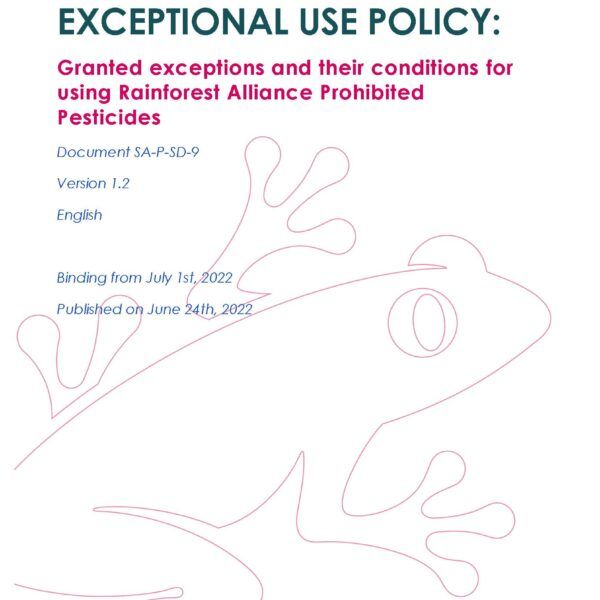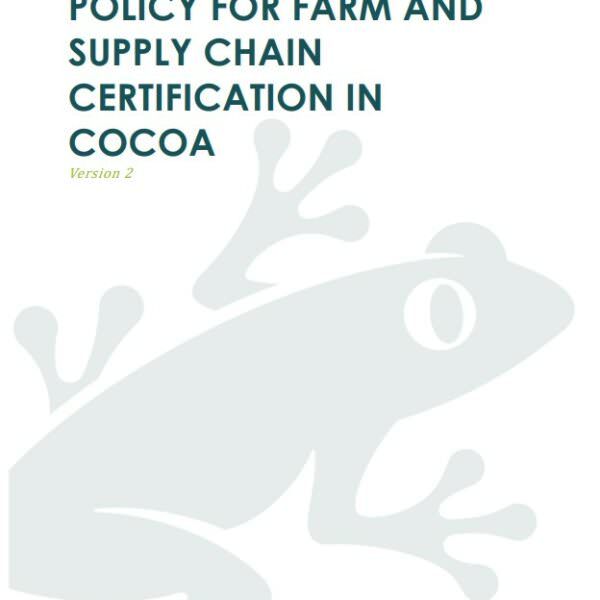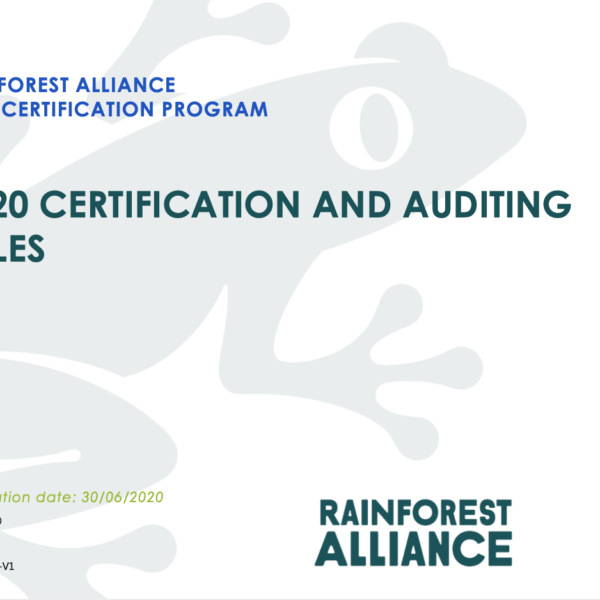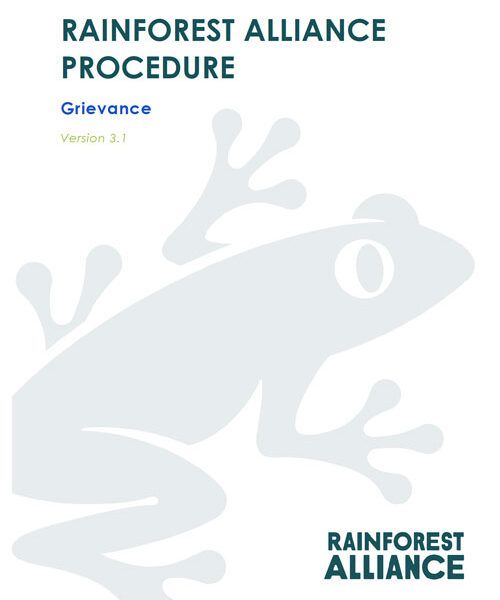
Despite efforts to increase environmental sustainability over the years, some intensive agriculture models are still dependent on Highly Hazardous Pesticides (HHPs). The objective of this policy, alongside the 2020 Rainforest Alliance Sustainable Agriculture Standard requirements, is to support producers on their journey to phasing these out, as they are considered the most toxic pesticides used in agriculture. We are doing so by granting limited exceptions to specific crop, pest, and country combination scenarios where no feasible alternatives to HHPs are available. At the same time, producers are required to take measures to mitigate and compensate for the negative impacts these pesticides have on people and the environment.
This policy has been developed through an extensive, thorough, and context-specific technical analysis of the use of HHPs. The analysis was carried out by the Rainforest Alliance Integrated Pest Management (IPM) team and an external panel of experts made up of scientists and technical experts with extensive knowledge of sustainable production and global expertise in the Rainforest Alliance key agricultural sectors. Further contextualization was possible thanks to Homologa®, the Global Crop Protection database, which offers detailed country information on registered pesticides and Maximum Residue Limits.
This policy will be updated every six months following the process and timelines below.
* Please consider that in line with our vision and strategy, we will not grant exceptions to paraquat, fipronil, or active ingredients listed in the prohibited list of the Rotterdam Convention, Stockholm Convention, or Montreal Protocol classification.
Exceptional Use Policy process
The Exceptional Use Policy is built upon requests from certified producers (see procedure for submitting a request below) to use pesticides that are included on the List of Prohibited Pesticides (Annex Chapter 4: Farming). Those requests are processed and analyzed considering the specific crop and country context, including pest relevance, other non-chemical control methods availability and efficacy, and registered alternatives for the specific crop in the country. Final decisions require a majority vote from the internal IPM team and an external panel of experts.
Regular updates of the policy will be conducted every six months, after taking into consideration the requests received during the previous semester.
Procedure for submitting a request
For a formal request to include an active ingredient in the Exceptional use Policy, producers need to submit the official Requests for Exceptional Use of Pesticides form.
However, urgent, and temporary requests, which are not part of the regular technical package and are Certificate Holder-specific, are handled through an emergency procedure. Temporary, urgent emergency requests are managed outside the Exceptional Use Policy. For submitting an emergency request, Certificate Holders should fill the official Emergency Requests for Exceptional Use of Pesticides form, including details on the context and period in which the substance is needed.
Overview of the received requests and results
Below you will find information on the received/processed requests, and when available, final decisions.
- II Semester 2020 (EUP V 1) – Requests & final decisions
- I Semester 2021 (EUP V 1.1) – Requests & final decisions
- II Semester 2021 (EUP V 1.2)- Requests & final decisions
- I Semester 2022 (EUP V 1.3) – Requests & final decisions
- II Semester 2022 (EUP V1.4) – Requests & final decisions
- I Semester 2023 (EUP V 1.5) – Requests & final decisions
- II Semester 2024 (EUP V1.6) – Requests & final decisions
The Rainforest Alliance 2020 Prohibited list follows the FAO/WHO Guidelines on Highly Hazardous Pesticides. These guidelines include the following criteria:
- WHO Category 1A: Extremely hazardous for human health or 1B: Highly hazardous for human health
- Globally Harmonized System of Classification and Labelling of Chemicals (GHS), Known or presumed carcinogenic (Categories 1A and 1B)
- Globally Harmonized System of Classification and Labelling of Chemicals (GHS), Known or presumed mutagenic (Categories 1A and 1B)
- Globally Harmonized System of Classification and Labelling of Chemicals (GHS), Known or presumed to be reproductive toxicant (Categories 1A and 1B)
- Montreal Protocol, Ozone-depleting substances
- Rotterdam convention (as contained in Annex III of the Convention and subject to the PIC procedure)
- Stockholm Convention, Persistent Organic Pollutants (POPs)
- Severe effects: pesticide active ingredients and formulations that have shown a high incidence of severe or irreversible adverse effects on human health or the environment as interpreted by the Rainforest Alliance.



